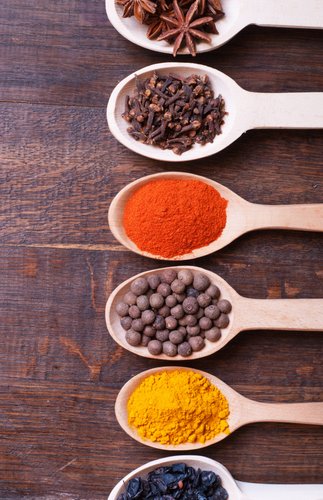Not all calories are created equal is discussed in a previous post. We’ve have also mentioned that metabolism is simply your body doing work – digesting, absorbing, building and repairing. In this article we’ll explore the significance of food and its affect on metabolic rate. Many of us stress about food and associated caloric distribution while attempting various avenues into weight management. Common expert advise for weight-loss is to increase lean body mass (article coming soon – Subscribe) by eating more, however this strategy often produces a reverse affect of greater fat storage. For fat loss (article coming soon – Subscribe) the popular method is caloric count and restriction, but this metabolically stressful option also results in weight gain. If eating more or less can both potentially cause weight gain, what strategy will achieve desired affect? The answer lies within food itself, contents other than just caloric values. Choosing foods that are nutrient-rich and wholesome forces the body to work harder in order to extract its benefits equating to appropriate caloric numbers.

Power of Chewing
Mechanical digestion is the physical breakdown of food into smaller pieces, which then subsequently accessed by enzymes. The simple act of chewing uses more muscles which contract and perform work. In the case of an apple, beyond working jaw muscles, other body parts such as arms and hands engaged in the process by repeatedly gripping the fruit and brining it towards the mouth for consecutive bites. All of the involved muscles generate movements that burn more calories. Such actions further increase energy expenditure by using utensils where food such as salad or lean meat is sliced and gathered with fork and knife.
On the contrary, a take-out burger, fries and soda require minimal chewing, as fast food often melts in your mouth. Such delicious treat meals of sugar-salt-fat come with substantial caloric values that is consumed in short time period. Furthermore, fast food options have a negative effect on appetite hormones, as the brain is simply unable to reflect the true amount of ingested calories during short feeding durations. There are many benefits for chewing and hormone response, as well as how to maximize on calories, which are discussed in greater detail in, The No-Diet Book.
Power of Fiber
Fiber has numerous benefits including slower digestion and gut flora health. We all try to increase fiber content in consumed diet and calculate our intake through nutritional package labels. The truth is that not all fiber is created equal. The added fiber in most packaged food (such as bread) adds minimal value when it comes to slowing down digestion, decreasing calorie absorption and filling your stomach. Choosing quality fiber that is naturally found in foods such as fruits, vegetables and grains will subsequently increase desired health benefits.
Fruits and vegetables are not only high in fiber, but require chewing and often low in calories. Natural fiber from such foods contains viscous and/or gel-forming properties, slow gastric emptying and macronutrient absorption from the gut – resulting in prolonged digestion and increased metabolism.
Power of Protein
Digestion includes the break down of macromolecules into smaller fragments that are absorbed across cell membrane. Large, complex molecules of proteins, sugars, and fats are reduced to simpler particles before they are transported to target cells for utilization and/or storage. Protein digestion is a multistep process that begins in the mouth and continues through the intestines. Mechanical breakdown of protein occurs in the mouth and a large part of digestion takes place in the stomach. Protein is first broken down in the stomach into smaller peptides, chains of 4-9 amino acids in length. As ingested meal travels down into the small intestine, these peptides are further broken down into even smaller subunits and finally into amino acids which are reabsorbed. This process is complex when compared to carbohydrates that are easily broken down in the mouth, especially simple carbs consisting mainly of sucrose – as in breads, juices and table sugar. Starches found in grains – pasta, wheat, potatoes – begin to breakdown soon as they enter the mouth by an enzyme, Amylase. No significant digestion of carbohydrates takes place in the stomach, and majority of sugar absorption occurs in the small intestine.
Protein is a complex molecule that takes time and energy to break down into basic amino acid blocks. Protein digestion is a process requiring a number of enzymes including pepsin, trypsin, chymotrypsin, carboxypeptidase among others; all participating in sequence or collaboration during this multi-step biochemical process. The body continuously works to produce necessary enzymes for protein digestion. Such enzymes repeatedly engage during protein metabolism increasing energy demands and overall metabolic rate.
 Power of Spice
Power of Spice
With spice, the primary objective is heat that raises body’s response to ingested meal. Foods like peppers, ginger, garlic, cloves, cinnamon, mustard all generate a response within our bodies. The reaction causes increase in body temperature and at times light perspiration, further expending extra calories. When considering spices in foods, select natural basic ingredients found in seeds and roots within food group variety. Attempt to avoid ready made “hot” sauce bottles containing preservatives, stabilizers, and extra calories from added sugar which frequently added to increase palatability.
Final Thoughts
This articles goes over the basics of food and metabolism in reference to types of food you should eat for weight management. For greater depth and understanding of:
- chewing and appetite,
- macronutrients and hormone response,
- benefits of natural versus added fiber, and
- not all protein is created equal learn more about our The No-Diet Book.
Whole foods like fruits, vegetables and complex grains are high in fiber and require chewing. Lean meats, beans and lentils are excellent sources of protein. These foods take time to digest along with a variety of enzymes. By raising digestive time and process, your body works harder expending more energy and thereby increasing its metabolic rate.





